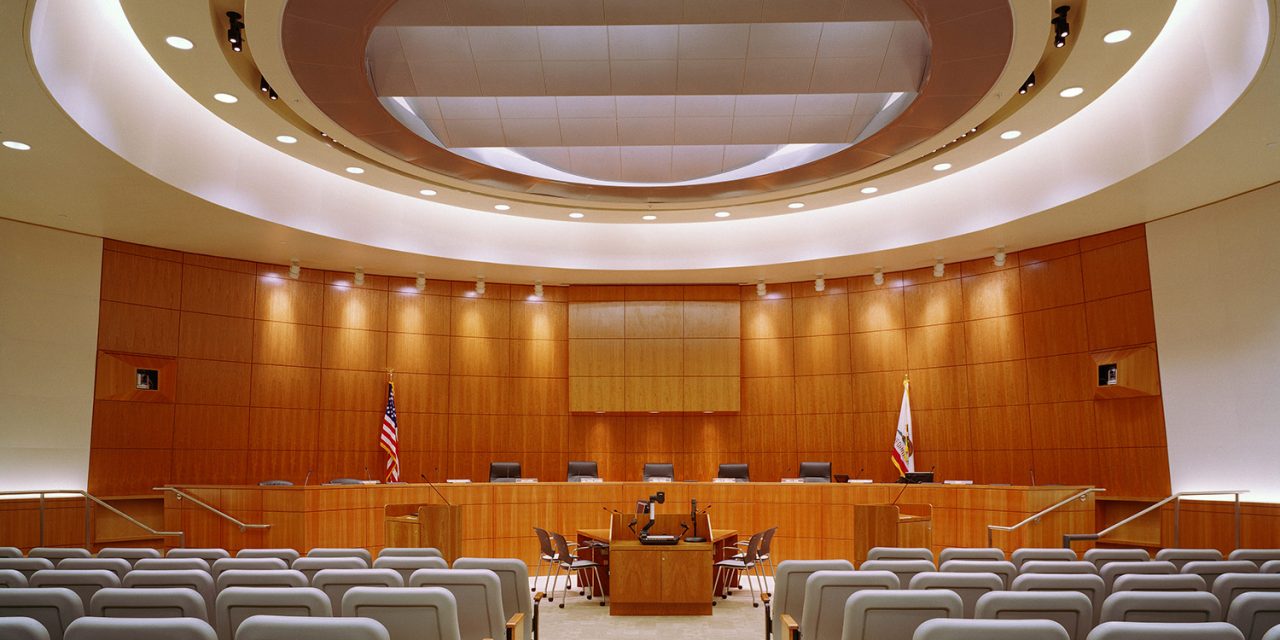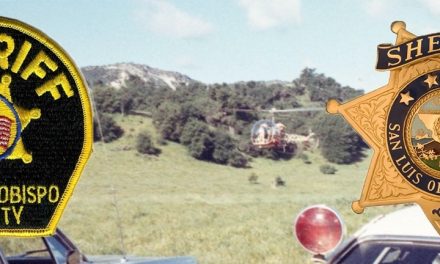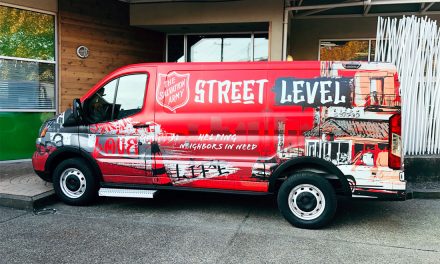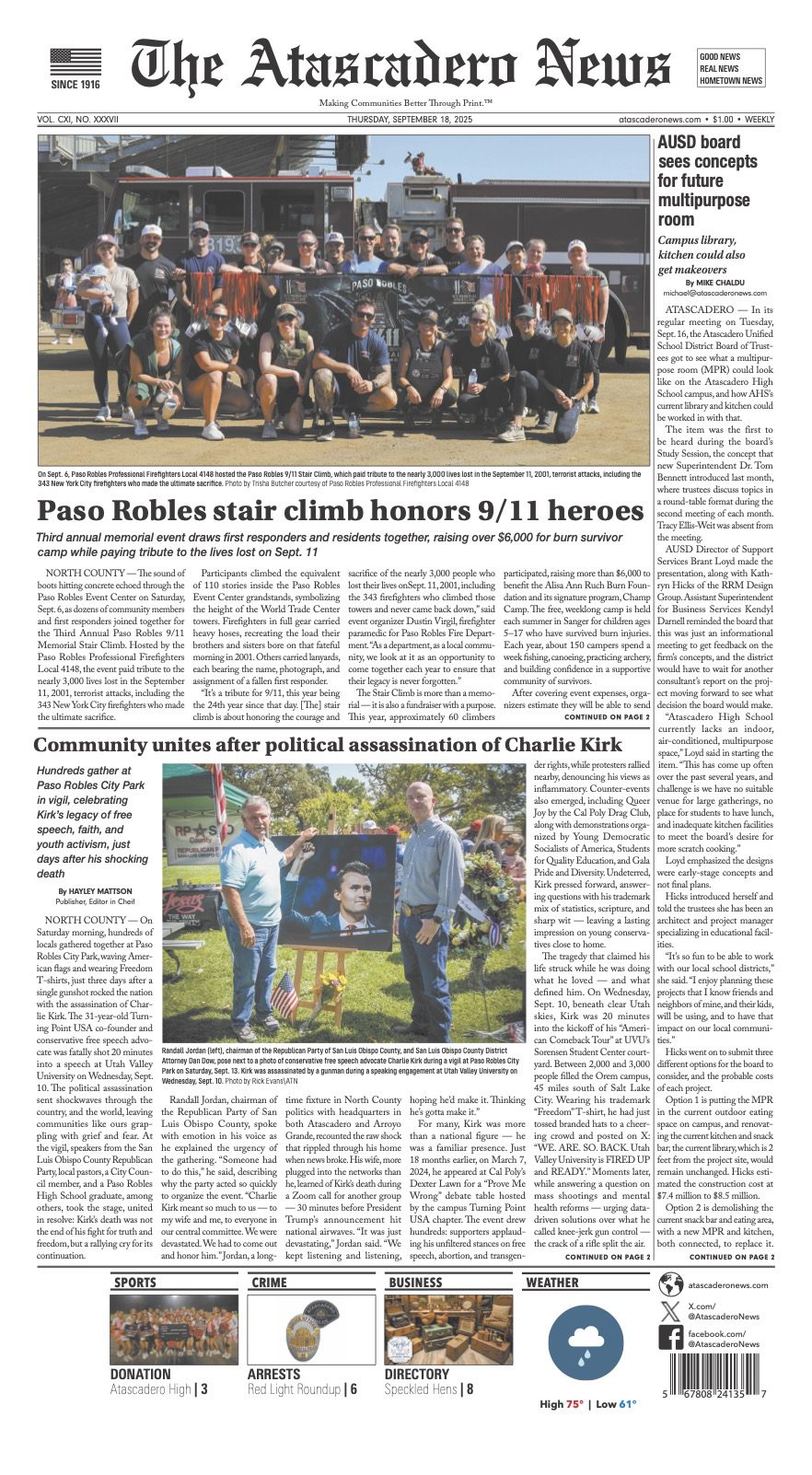Supervisors vote 3-2 to investigate public-controlled redistricting
SAN LUIS OBISPO COUNTY — Supervisorial district boundaries could be put into the hands of the public after a 3-2 vote directed staff to explore developing an independent redistricting commission at the San Luis Obispo County Board of Supervisors meeting on Tuesday, Sept. 12.
The district map approved in 2021 was appealed by two local groups — SLO County Citizens for Good Government and SLO County League of Women — who sued the county in early January 2022. The suit was taken to state court under the allegations of “illegal partisan gerrymander under the Fair Maps Act and the California Constitution.” The 2021 approved map was given the green light by the previous board, which included Bruce Gibson (District 2), Lynn Compton (then District 4 supervisor), Dawn Ortiz-Legg (District 3), Debbi Arnold (District 5) and John Peschong (District 1), with Gibson and Ortiz-Legg dissenting.
In March 2023, a settlement was reached, leaving the county to again draw new boundary maps to comply with the Fair Maps Act. In that settlement, the county will pay $300,000 to the SLOCCGG. However, at the time, Peschong noted this redistricting is costing the county nearly $1 million.
Now, in response, staff has proposed to establish an independent redistricting commission — a body, other than a legislative body, that is empowered to adopt the district boundaries of a legislative body.
Supervisor Jimmy Paulding (D-4) issued his support for the independent commission, saying, “I think we need this more than ever because the public’s trust was eroded and eviscerated by the actions of the prior board, which I do believe were consistent with gerrymandering.”
However, Arnold (D-5) and John Peschong (D-1) voted against the commission, arguing that the map selected did in fact comply with the law and did not violate the Fair Maps Act.
“This map created districts that were swing districts or purple districts,” said Peschong. “You have three people up here that won their seats against candidates that you said they shouldn’t have won.”
Supervisors have three options set before them: an advisory commission, a hybrid commission, or an independent one.
Three of the five Supervisors leaned in on the independent commission, including Gibson (D-2).
“This is about empowering the voting public and getting away from the fact and the perception that an elected body is going to choose its voters,” Gibson said.
There are several requirements for holding an independent redistricting commission, including:
- Open Selection Process: The commission must allow all eligible residents to participate in the selection process.
- Defined Membership: The commission must specify the number of members it comprises.
- No Direct Appointments: Commissioners cannot be directly appointed by legislative bodies or elected officials, ensuring their independence.
- Non-Partisanship: The commission must not consist entirely of members affiliated with the same political party, promoting a balanced representation.
- Compliance: It must adhere to the Elections Code concerning Independent Redistricting Commissions.
- Political Neutrality: While serving on the commission, members cannot engage in campaign-related activities, work for local candidates, endorse candidates, volunteer, or make campaign contributions.
- Additional Post-Service Requirements: There are additional restrictions both during and within five years after commission service.
- Legal Oversight: The commission is subject to the Political Reform Act, Brown Act, and Public Records Act, ensuring transparency and accountability.
- Public Engagement: It must hold a minimum of three public hearings before adopting a district map, allowing community input.
Additionally, there are specific disqualifications within eight years before appointment. Applicants and their family members cannot have held elected or appointed local office, worked for political campaigns in the jurisdiction, been involved with political parties, made significant campaign contributions locally, or registered as lobbyists in the local jurisdiction.
Santa Barbara County voted to create an independent district commission back in 2018. Per the county staff report, Santa Barbara County has 11 redistricting commissioners who must be county residents, registered voters, and possess relevant analytical, legal, and impartiality skills. These commissioners were established through a ballot measure and can only be altered or disbanded by popular vote.
In contrast, larger counties like Los Angeles, Riverside, San Diego, Fresno, and Kern have 14-member commissions with stricter applicant requirements. All counties follow a similar application process, where individuals apply to the elections official. In Santa Barbara, nine applicants are chosen per district, totaling 45, with the district attorney appointing five from this pool.
Supervisors moved forward with the independent redistricting commission with a 3-2 vote, Peschong and Arnold both voting no.
The next San Luis Obispo County Board of Supervisors meeting is scheduled for Tuesday, Sept. 26, at 9 a.m.
















